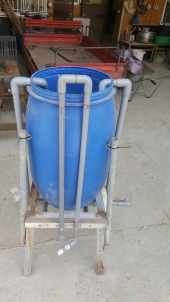
 3
3




Other people may reject you but if you lie in the forest floor for long enough the moss and fungi will accept you as one of their own!
 2
2










 1
1




Other people may reject you but if you lie in the forest floor for long enough the moss and fungi will accept you as one of their own!










Other people may reject you but if you lie in the forest floor for long enough the moss and fungi will accept you as one of their own!




My Food Forest - Mile elevation. Zone 6a. Southern Idaho <--I moved in year two...unfinished...probably has cattle on it.










Other people may reject you but if you lie in the forest floor for long enough the moss and fungi will accept you as one of their own!






 1
1




My Food Forest - Mile elevation. Zone 6a. Southern Idaho <--I moved in year two...unfinished...probably has cattle on it.
 1
1














Other people may reject you but if you lie in the forest floor for long enough the moss and fungi will accept you as one of their own!
 2
2






















Other people may reject you but if you lie in the forest floor for long enough the moss and fungi will accept you as one of their own!
 1
1












 1
1




Medicinal herbs, kitchen herbs, perennial edibles and berries: https://mountainherbs.net/ grown in the Blue Mountains, Australia




Medicinal herbs, kitchen herbs, perennial edibles and berries: https://mountainherbs.net/ grown in the Blue Mountains, Australia










Other people may reject you but if you lie in the forest floor for long enough the moss and fungi will accept you as one of their own!








Medicinal herbs, kitchen herbs, perennial edibles and berries: https://mountainherbs.net/ grown in the Blue Mountains, Australia




Medicinal herbs, kitchen herbs, perennial edibles and berries: https://mountainherbs.net/ grown in the Blue Mountains, Australia




Angelika Maier wrote:I found a description on a brewer in 'organic' Australia. Unfortunately, it is quite expensive. organic
They say that you need a pump 200l/min for a 60 l wheelie bin, that sounds a lot to me. Probably I would go for a slightly smaller brewer. Here's a pump in ebay: pump How many litres per minute to size of barrel? What would you look for in a pump (I don't want to buy anything cheap which breaks after a short while)




Medicinal herbs, kitchen herbs, perennial edibles and berries: https://mountainherbs.net/ grown in the Blue Mountains, Australia




Medicinal herbs, kitchen herbs, perennial edibles and berries: https://mountainherbs.net/ grown in the Blue Mountains, Australia








Medicinal herbs, kitchen herbs, perennial edibles and berries: https://mountainherbs.net/ grown in the Blue Mountains, Australia








Medicinal herbs, kitchen herbs, perennial edibles and berries: https://mountainherbs.net/ grown in the Blue Mountains, Australia




Joshua Parke wrote:
After I run it I empty the brew into a larger barrel and then fill the brewer with fresh water and use a brush to scrub the inside, then dump that into the barrel so I can get as much of the sediment out of it as possible. I scrub it with a brush and fresh water after I finish with it, and run hydrogen peroxide in it as well just for good measure, but I don't fill it up all the way for the final scrub/cleaning. And I don't use the hydrogen peroxide water with the finished compost tea. The hydrogen peroxide will break down to water and oxygen, or something like that, so I'll use it to water with later. I keep the air pump on until all the water is drained.






 1
1




My Food Forest - Mile elevation. Zone 6a. Southern Idaho <--I moved in year two...unfinished...probably has cattle on it.




Yes, I'm that David The Good. My books are here: http://amzn.to/2kYcCKp. My daily site is here http://www.thesurvivalgardener.com and my awesome videos are here https://www.youtube.com/subscription_center?add_user=davidthegood




David Good wrote:I make "compost tea" the evil way:
https://www.youtube.com/watch?v=ZZquKZ6EVEY
That's Dave's Fetid Swamp Water. And plants love it. I simply got tired of bothering with aeration.

| I agree. Here's the link: http://stoves2.com |


